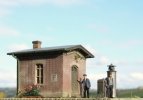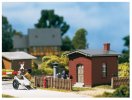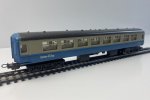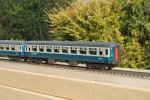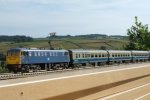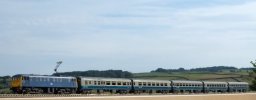For 30 pieces of silver of the Queen's realm I recently acquired this from a well known auction site advertised as 'Rocco electric diesel locomotive'

. Whether it was a runner or not it didn't really matter as it would have provided me with a spare Roco drive - providing there were no split gears - which there wasn't.
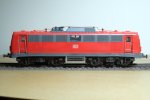
As it tuns out the loco was originally produced for a Roco Digital start set and not only do I have a working loco but also a Roco-ESU lokpilot decoder to boot. When I interrogared the decoder on Lokprogrammer 5 it was not supported, however, I was able to interrogate the decoder on old version of Lokprogrammer. I suspect this is a v2 lokpilot as it would have been read by Lokprogrammer 5 if it was v3.5.
Anyway, to bring it up to my standards I stripped down the body, placing aside the insulators, and started to carve off the moulded handrails. These were replaced with brass wire and I've also started throwing Weinert detail parts at it - so far new buffers and coupling hook socket from my spares box. The loco I'm modelling retained it's original handrails.
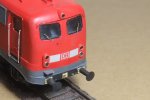
I also reworked the centre window in the electric compartment so it is flush and removed the centre glazing bar. In addition the moulded windscreen wipers were carefully carved off the glazing and then polished with manicurists nail buffers to remove any last traces.
The biggest hurdle was the front end and glazing as both the Br 141 and Br 110.1 are Einheitsloks. Althought the glazing is the same size in both models the 141 windows appear larger.
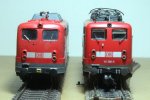
I wasn't happy with the cab window surrounds so I carried out a modification using a tool made up from a piece of scrap brass to add a rebate around the front frames as seen on the Einheits cab. It did take several attempts with some help from some Milliput and a styrene template to get it right.
Not brilliant by any stretch of the imagination but an improvement from the original surrounds on the left, modified in the centre and on the right the Br 141 for comparison (I also used this for the measurements).
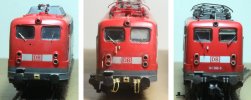
And more parts have been thrown at the Elok, namely the waist level UIC sockets, front hand grabs, UIC buffer steps, air hoses and a relocated short antenna on the no.2 end. The low gutter is correct for version I'm modifying.
Some finer roof insulators have been installed and there is further roof detail to add.
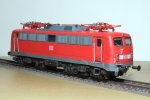
Should Roco bring out the re-tooled Br 110.1 in verkhersrot then I'll maybe snap one up - in the meantime this will do







 .
.


























 - it's 20mm too long over the body and I think it was a scaled up version of the original Fleischmann HO model E69 (below). I cannot do a cut 'n' shut to shorten the bonnets as the body has been stretched over it's length resulting in a longer cab.
- it's 20mm too long over the body and I think it was a scaled up version of the original Fleischmann HO model E69 (below). I cannot do a cut 'n' shut to shorten the bonnets as the body has been stretched over it's length resulting in a longer cab.


 .... build a new body to scale.... and shorten the upper part of the chassis to suit....
.... build a new body to scale.... and shorten the upper part of the chassis to suit....


 .
.







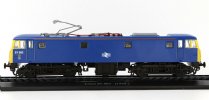
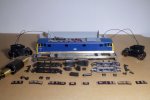







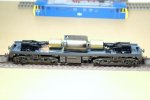
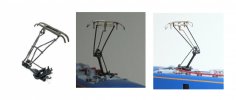
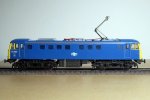
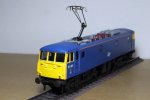
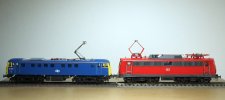
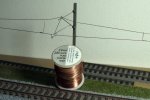
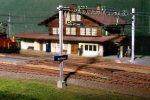

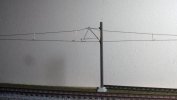
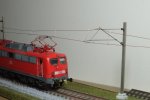

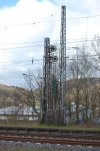
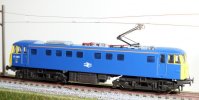

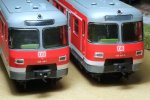
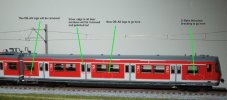
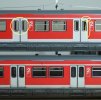
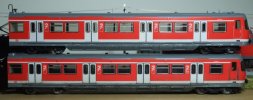
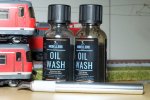
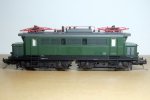
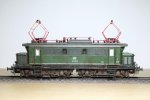
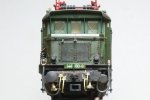
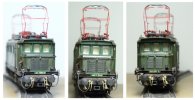
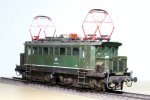
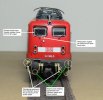
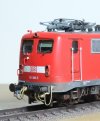
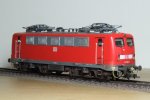
 are from Busch scenics.
are from Busch scenics.